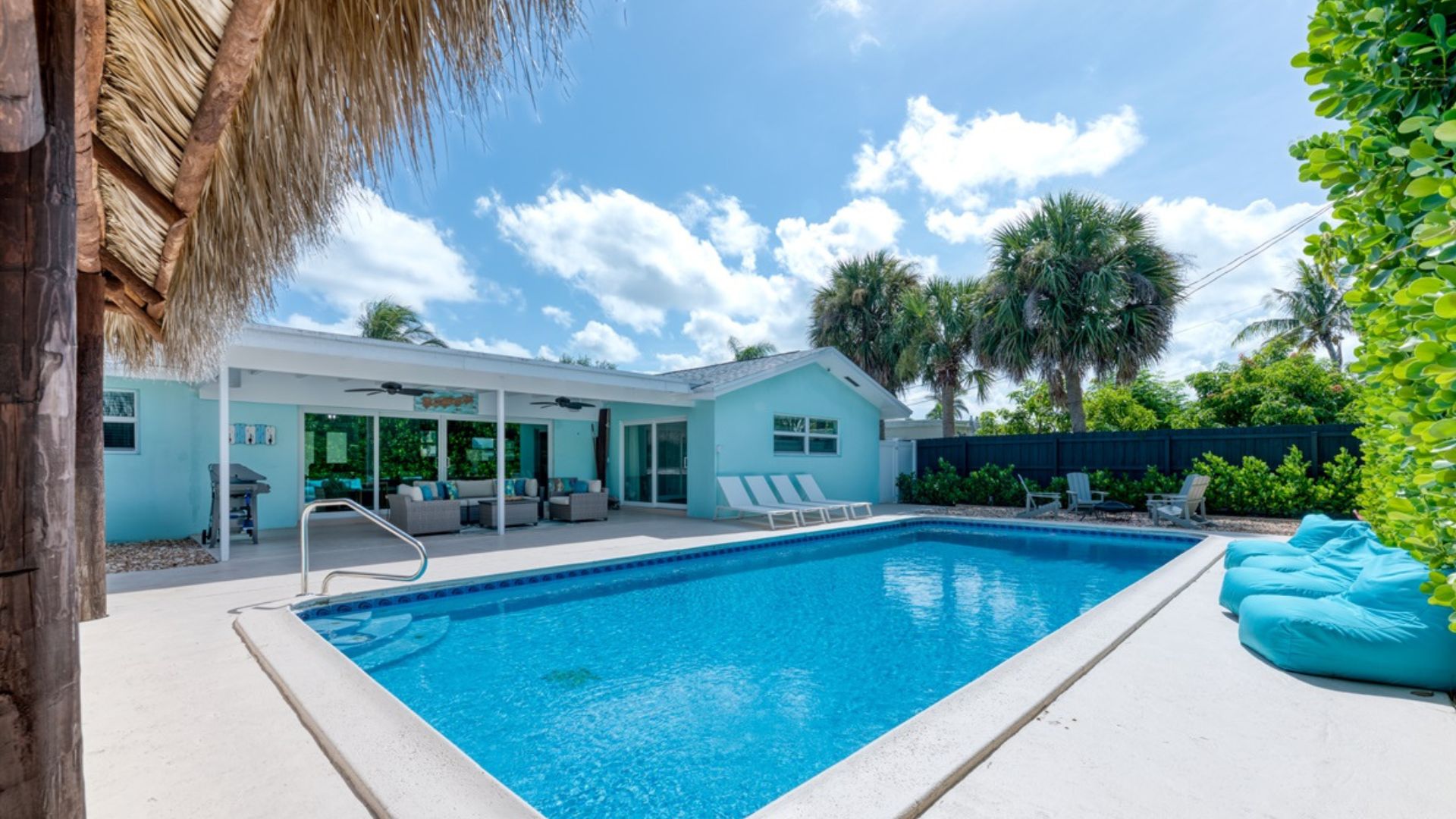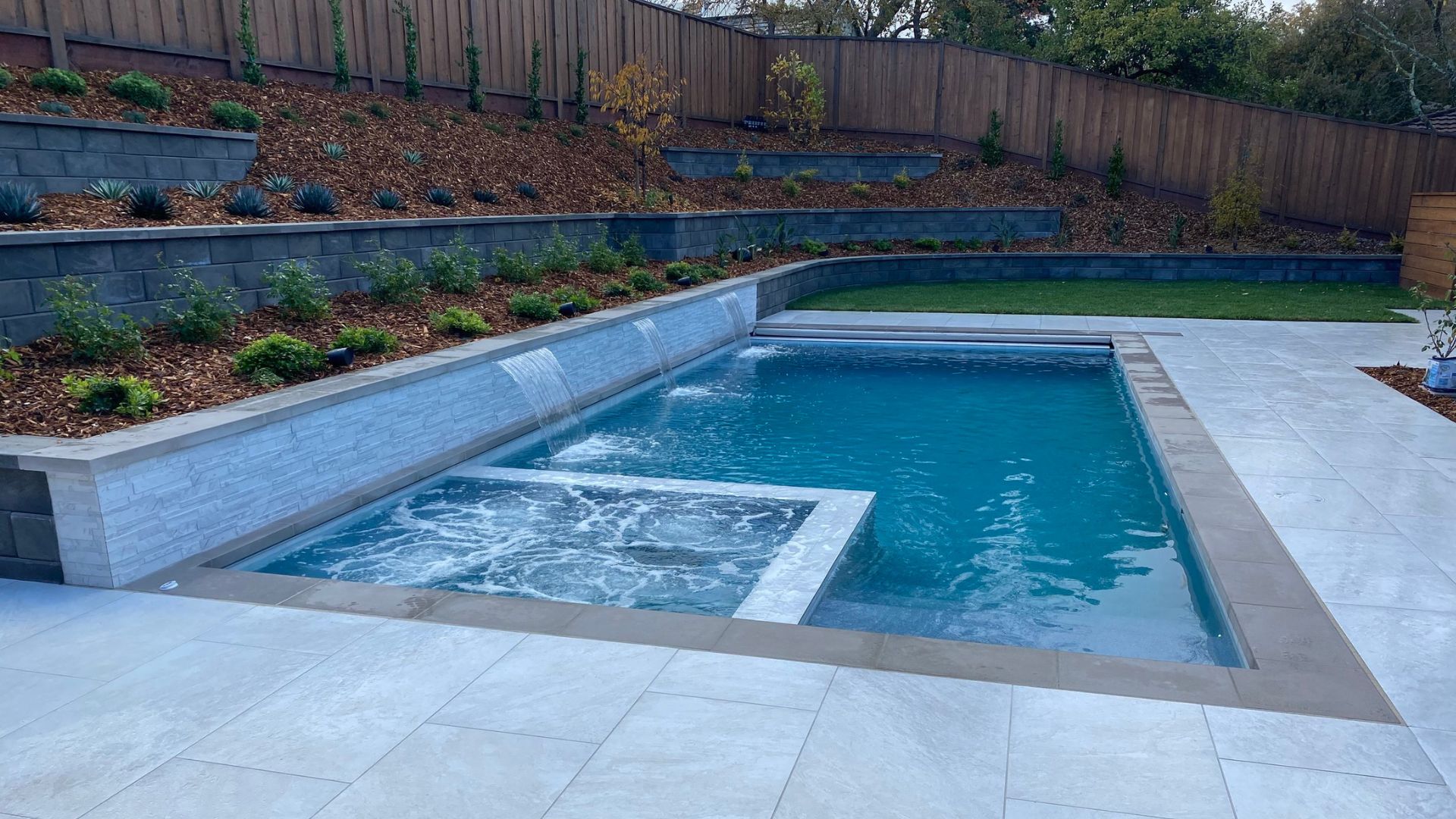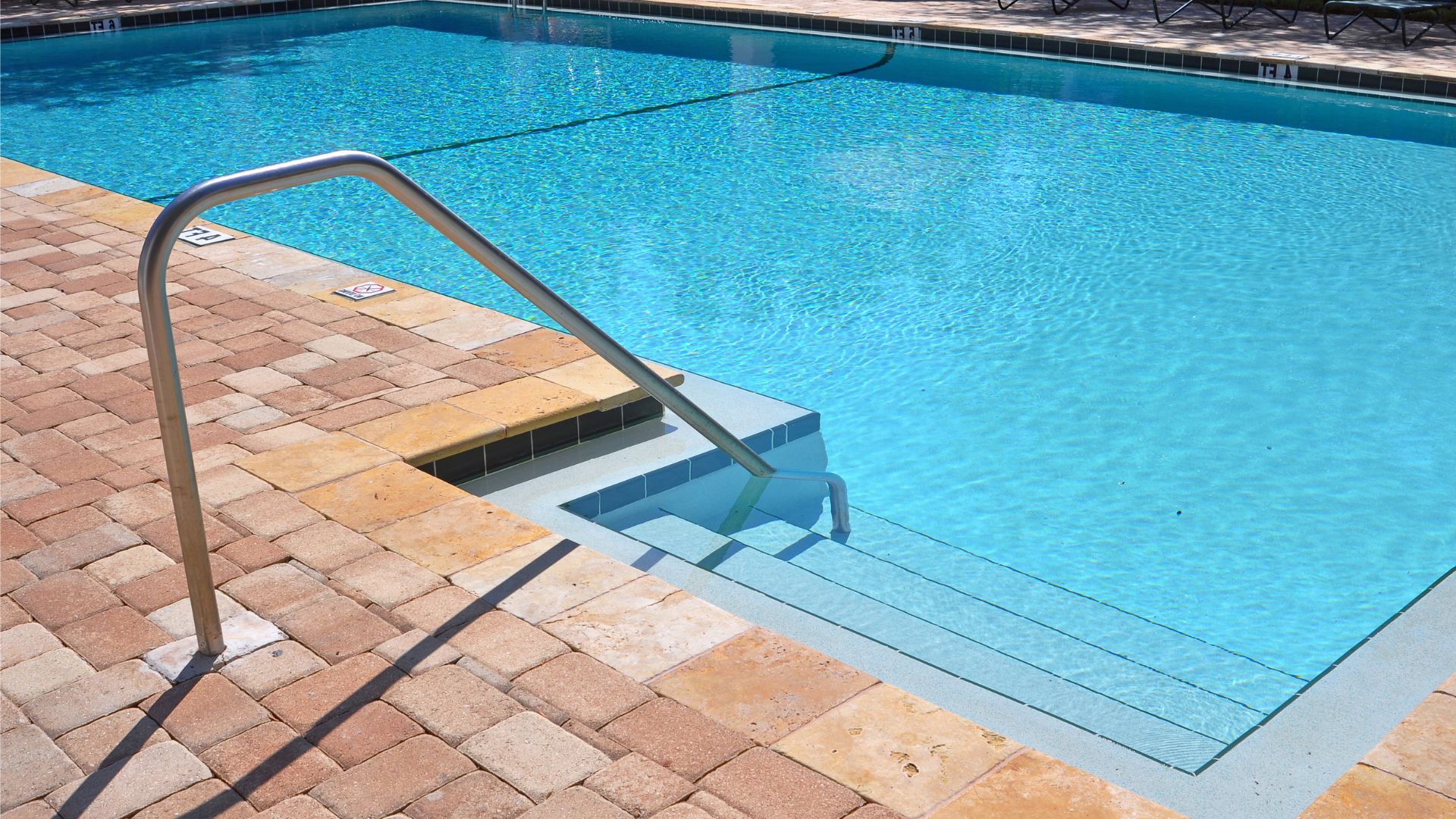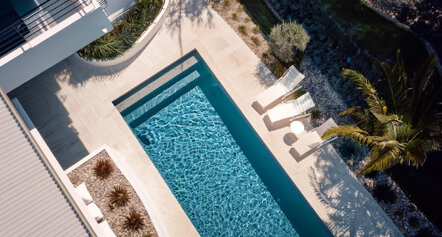Did you know saltwater pools account for over 75% of new pool installations in some Australian regions? More homeowners are switching from a regular chlorine pool to a saltwater swimming pool, drawn by the promise of a more enjoyable and low-maintenance swimming experience.
A saltwater pool offers several advantages over traditional chlorine systems. The water feels softer on the skin, and there’s no overwhelming chemical smell. Unlike a regular chlorine pool that requires constant chemical adjustments, a saltwater system produces chlorine naturally, reducing the need for frequent chlorine additions. This results in fewer harsh chemicals, lower maintenance, and a more balanced swimming environment.
Switching to a saltwater swimming poolis easier than many homeowners expect. This guide will walk you through the entire process, from understanding how a saltwater system works to the necessary equipment and step-by-step conversion instructions.
Whether you want to upgrade your existing pool or install a new system, this guide will provide expert tips to help you enjoy the benefits of a saltwater pool for years to come.
Understanding the Basics of Converting to a Saltwater Pool
Switching from a traditional chlorine pool to a saltwater pool is a simple upgrade that offers long-term benefits. Saltwater pools use a specialised system to generate chlorine naturally, keeping pool water clean without the need for constant chemical adjustments. With the right pool equipment and proper maintenance, a salt pool provides a more comfortable and hassle-free swimming experience.

How a Salt Chlorine Generator Works
A salt chlorine generator, also known as a salt chlorination system, converts pool salt into chlorine through electrolysis. As the pool water passes through the generator, an electric current breaks down the salt, producing chlorine that sanitises the pool. Unlike traditional chlorine pools that require frequent chemical dosing, salt systems maintain a steady chlorine level, keeping the water clear and balanced.
Saltwater Pools vs Traditional Chlorine Pools
Saltwater pools are often preferred for their softer pool water, which is gentler on the skin and eyes. A chlorine pool relies on manually added chemicals, which can lead to strong chlorine smells and irritation. Pool salt in a salt system provides a continuous sanitising effect without large fluctuations in chlorine levels. Salt pools also require less maintenance, making them a popular choice for homeowners looking for an easier pool care routine.
Converting an Existing Pool with the Right Pool Equipment
Most existing swimming pools can be upgraded with a salt system. Installing a salt chlorine generator, checking for compatibility with current pool equipment, and using pool-grade salt ensure a smooth transition. The right setup will keep the pool running efficiently while providing all the benefits of a saltwater pool.
Pros and Cons of Choosing a New Saltwater Pool Over a Chlorine Pool
A saltwater pool conversion is a great choice for pool owners looking for a low-maintenance and more comfortable swimming experience. Saltwater systems generate pure chlorine using a salt chlorinator, reducing the need for chemical additives. While saltwater pools offer several benefits, it is important to consider the potential drawbacks before upgrading an existing pool.
Pros of a Saltwater Pool Conversion
- Lower maintenance – A salt system continuously produces chlorine, so there is no need for frequent chemical adjustments.
- Better water quality – Pool salt creates softer, gentler water on the skin and eyes.
- Long-term cost savings – Fewer chemical purchases mean reduced ongoing expenses.
- No harsh chlorine smell – A saltwater chlorinator generates pure chlorine gradually, preventing strong chemical odours.
Cons of a Saltwater Pool Conversion
- Higher initial investment – A salt chlorinator and installation costs more than traditional chlorine treatments.
- Potential for corrosion – Some pool equipment, such as metal fixtures, may need upgrading to withstand salt water.
- Requires water chemistry checks – Regular testing of salt levels, pH, and chlorine is necessary to keep the water balanced.
- Not completely chlorine-free – Saltwater systems generate chlorine naturally, so pool maintenance is still required.
When considering how much salt is needed, using pool-grade salt ensures proper function and extends the life of the system. A well-maintained sand filter and routine monitoring of salt levels help keep a saltwater pool in top condition.
Essential Pool Equipment Needed to Convert Your Pool to Saltwater
A saltwater pool conversion requires the right equipment to ensure the system runs efficiently. Unlike traditional chlorine pools, saltwater pools use a salt system to generate pure chlorine, keeping the water clean with less manual maintenance. Pool owners upgrading an existing pool must install key components to maintain balanced pool water chemistry.
Chlorine Generator (Saltwater Chlorinator)
The saltwater chlorinator, also known as a salt chlorinator, is the heart of the system. It converts pool salt into pure chlorine using electrolysis, sanitising the water without the need for traditional chlorine treatments. A high-quality salt cell inside the unit is essential for long-term performance.
Pool Pump and Filter
A strong pool pump and an efficient filtration system are necessary to circulate the salt water and remove debris. Many saltwater pools use a sand filter to trap dirt and keep the water clear. Pool owners upgrading their equipment should ensure the pump is compatible with a salt system.
Pool Salt and Proper Salt Levels
To start a new saltwater pool, it is important to add the right amount of pool-grade salt. The amount needed depends on the pool size, but maintaining proper salt levels ensures the system works effectively.
Water Testing Kit
Regular testing of chlorine levels, salt levels, and pH is essential for maintaining balanced pool water chemistry. This helps keep the salt system running efficiently.
Compatible Pool Materials
Saltwater can be more corrosive than fresh water so that some older swimming pools may require upgrades. Using durable materials for ladders, handrails, and heaters ensures a smooth saltwater pool conversion without long-term damage.
Step-by-Step Guide to Convert Your Pool to a Saltwater System
Converting a chlorine pool into a saltwater system is straightforward and requires the right preparation and equipment. These steps ensure a smooth transition and keep your new saltwater pool running efficiently.

Step 1: Test Your Existing Pool Water Chemistry
Before making any changes, it is important to check the pool water chemistry to ensure a balanced starting point. Use a water testing kit to measure:
- pH – Ideal range is between 7.2 and 7.8.
- Alkalinity – Should be between 80 and 120 ppm.
- Calcium Hardness – Levels should be balanced to protect pool surfaces and equipment.
Adjusting these levels before installing the salt system helps prevent issues with water clarity and salt cell efficiency.
Step 2: Drain or Dilute the Water in a Chlorine Pool
If your existing pool has high chlorine or stabiliser levels, a partial drain may be necessary before switching to a saltwater pool. Removing some water and refilling with fresh water ensures the salt chlorinator can function correctly. Pools with excessive chemicals from years of chlorine use may need this step for a better transition.
Step 3: Install the Chlorine Generator and Connect Pool Equipment
The saltwater chlorinator should be installed after the pool pump and filter to ensure proper water flow. This placement allows the system to generate chlorine efficiently. Follow the manufacturer’s instructions to connect the salt cell to the plumbing and power supply. If upgrading an existing pool, ensure the equipment is compatible with a salt system.
Step 4: Add Pool Grade Salt and Circulate the Water
Once the salt system is installed, it is time to add pool grade salt. The amount needed depends on pool size, but most pools require 3,000 to 3,500 ppm (parts per million) of salt for optimal operation. Follow these steps:
- Calculate how much pool salt is needed based on pool volume.
- Evenly distribute the salt by pouring it around the pool, avoiding dumping it all in one area.
- Run the pool pump for at least 24 hours to dissolve the salt completely before turning on the generator.
Step 5: Run the System and Balance Pool Chemistry
After the salt has fully dissolved, switch on the saltwater chlorinator and let it produce chlorine. Monitor key levels using a test kit:
- Salt Levels – Should be within the recommended range for your system.
- Chlorine Levels – Adjust the generator settings if chlorine is too high or low.
- pH and Alkalinity – Balance these levels to maintain clear and comfortable water.
Step 6: Monitor and Maintain the New Saltwater Pool
Routine monitoring ensures the salt system runs efficiently. Check the salt cell regularly for calcium buildup and clean it as needed. If chlorine levels fluctuate, adjust the generator settings or test salt levels. Keeping the pool pump and filter in good condition prevents circulation issues. With proper maintenance, a saltwater pool provides a clean and refreshing swimming experience for years.
Pool Maintenance Tips for a Long-Lasting Saltwater System
Regular pool maintenance is essential to keep a saltwater system running efficiently. Unlike a traditional pool, a saltwater pool requires careful monitoring of salt concentration and chlorine production to ensure clean and safe water. A well-maintained pool system reduces wear on equipment and extends the lifespan of the salt chlorinator.

Test and Balance Water Chemistry Regularly
A pool owner should test chlorine and pH levels weekly to maintain balanced water. Unlike traditional pool care, liquid chlorine or chlorine tablets are rarely needed, as the salt system generates chlorine naturally. If chlorine levels drop too low, check salt concentration and adjust the chlorinator settings.
Clean the Chlorine Generator and Pool Filter
Over time, calcium buildup can affect performance. Cleaning the chlorine generator cell prevents blockages and ensures steady chlorine production. Backwashing or replacing filter media, such as glass filter media, improves filtration and keeps water clear.
Inspect Pool Equipment and Ensure Salt Dissolves Properly
Pool cleaners and pumps should be checked regularly for salt-related wear. All the salt should dissolve completely after each addition to prevent undissolved granules from settling.
Seasonal Maintenance for a Healthy Pool System
During colder months, reducing chlorinator output helps maintain proper salt levels. In summer, increased sun exposure may require adjusting the salt required for consistent sanitation. Keeping up with pool maintenance ensures a refreshing swimming experience without the strong chlorine smell of a traditional pool.
Common Mistakes to Avoid When You Convert to a Salt System
Switching to a saltwater pool is a great upgrade, but avoiding common mistakes ensures the system runs efficiently. A well-maintained salt system keeps the water clear and the pool equipment in good condition.
Adding Too Much Salt Too Quickly
Dumping in too much salt at once can throw off water chemistry and cause imbalances. Always calculate the right amount for your pool size and allow the salt to dissolve fully before testing levels. Running the pump helps distribute salt evenly throughout the water.
Using the Wrong Type of Pool Salt
Not all salt is suitable for a saltwater system. Pool owners should always use pool grade salt to avoid impurities that can cloud the water or damage the system. Table salt and rock salt contain additives that should never be used in a pool.
Skipping Water Chemistry Checks
A salt pool still requires pH and alkalinity adjustments. Unbalanced water can cause irritation, scaling, and corrosion. Regular testing keeps the pool system in top shape.
Neglecting Chlorine Generator Maintenance
The salt cell inside the chlorine generator must be cleaned regularly to prevent calcium buildup. A dirty cell reduces chlorine production and affects water clarity.
Thinking Saltwater Pools Require No Maintenance
While saltwater pools are easier to maintain than traditional chlorine pools, they still need routine care. Checking salt levels, cleaning filters, and inspecting the system prevents costly repairs and keeps the water balanced.
Cost Breakdown of Converting to a Saltwater Pool
Switching to a saltwater pool requires an initial investment, but the long-term savings make it a cost-effective choice for many homeowners. While traditional chlorine pools require frequent chemical purchases, a saltwater system reduces ongoing expenses by naturally generating chlorine. Below is a detailed breakdown of the costs involved.
Upfront Costs
The main expense in converting to a saltwater system is installing a salt chlorinator, which replaces the need for manually adding chlorine.
- Salt Chlorinator (Chlorine Generator): $900 – $1,400 for a basic self-cleaning model
- Pool Salt: $15 per 20kg bag, with most pools requiring several bags initially ($100 – $300 total)
- Professional Installation: $1,200 – $2,200, depending on pool size and system complexity
- Total Initial Investment: Approximately $3,600 for a standard 45,000-litre pool
Ongoing Costs
Although a saltwater pool requires less maintenance than a traditional chlorine pool, some ongoing costs should be factored in.
- Salt Replenishment: $100 – $300 per year, depending on water loss and dilution
- Salt Cell Replacement: $300 – $600 every 3 to 5 years
- Water Testing and Chemical Adjustments: $100 – $150 annually for pH and calcium balance
Total Yearly Maintenance Costs:Approximately $400 for an average-sized pool in a temperate climate.
Long-Term Savings
Saltwater pools reduce the need for regular chlorine purchases, leading to significant savings over time. Since the system maintains a consistent chlorine level, pool owners can also avoid costly algae treatments.
- Traditional Chlorine Pool Costs: $1,400 – $1,800 per year for chemicals and maintenance
- Saltwater Pool Costs: Around $400 per year for salt, testing kits, and minor maintenance
Five-Year Cost Comparison
A saltwater system typically becomes more cost-effective after 2 to 3 years, making it a smart long-term investment for homeowners. Beyond financial savings, the reduced need for chemicals also makes pool maintenance easier and improves the overall swimming experience.
Upgrade Your Pool with a Saltwater System Today
Converting to a saltwater system is one of the best upgrades for a backyard pool. A saltwater pool provides a more enjoyable swimming experience, lower maintenance, and long-term cost savings. Whether converting an existing pool or installing a new saltwater pool, the process is simple with the right equipment and guidance.
Flamingo Pools offers expert saltwater pool conversion services, ensuring a smooth and professional installation. Contact us today to learn more about our salt system upgrades, chlorine generator installations, and pool maintenance services. Let us help you convert your pool into the perfect saltwater oasis.




